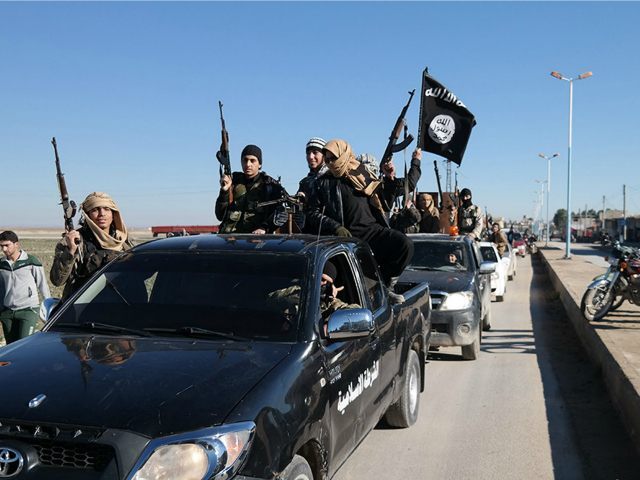A spokesman for the U.S.-led coalition against the Islamic State (ISIS) said on Tuesday that some 10,000 members of ISIS are still lurking in Iraq and Syria.
With its numbers vastly diminished from their peak of over 40,000 fighters, ISIS has transitioned to an insurgency instead of a conquering army, but it remains a dangerous threat.
“The U.N. says there are approximately 10,000 members of Daesh left,” said Operation Inherent Resolve (OIR) spokesman Col. Wayne Marotto at a press conference on Tuesday, using another name for the Islamic State.
“They are not going to take over any territory, because we’ve defeated them territorially. Now they are doing an insurgency” Marotto explained.
“They are assassinating people, they are kidnapping people. They are a bunch of criminals. They are still out there in some parts of Iraq, in the mountains and in the caves. We find them and we bomb them and we kill them,” he said.
Kurdish news service Rudaw noted that “disputed areas such as Kirkuk, Salahaddin and Diyala are particularly vulnerable to ISIS attacks, including abductions, extortion and IED explosions.” Those three cities are such terrorist hotspots that they have become collectively known as the “Triangle of Death.”
Marine Gen. Frank McKenzie of U.S. Central Command, who oversees American military operations in the Middle East, made much the same point in remarks to the National Council on U.S.-Arab Relations last Thursday. McKenzie highlighted the danger of ISIS rebuilding its strength by recruiting among displaced Iraqis and Syrians.
“Today, across vast swaths of Syria and Iraq, the systemic indoctrination of IDP and refugee camp populations who are hostage to the receipt of ISIS ideology is an alarming development with potentially generational implications,” he said.
McKenzie warned that unless the international community finds a way to “repatriate” and “reintegrate” those who crossed international borders to join the Islamic State at the height of its power, “we are buying ourselves a strategic problem 10 years down the road when these children grow up radicalized.”
“If we don’t address this now, we’re never really going to defeat ISIS,” he said.
McKenzie found a pithy way to explain why the diminished ISIS is no longer a major security threat to the United States: “Because when you are running for your life up and down the Euphrates River Valley, listening to the noise of an armed MQ-9 drone overhead, it’s hard to think about conducting attack planning against Detroit.”
The point made by U.S. military analysts is that ISIS is still a significant regional menace and it has ambitions to reconstitute its strength and become an international threat again.
Iraq’s Counter-Terrorism Service announced on Monday that a high-level “administrative coordinator of Daesh terrorist gangs,” Abu Nabaa, was arrested in a “unique operation” conducted with “complete secrecy and great success” at the Baghdad airport.
In addition to retaining gangs big enough to require administrative coordination in Iraq and Syria, ISIS still has sympathizers and operatives worldwide, including in the United States.
On Tuesday, 34-year-old San Antonio resident Kristopher Sean Matthews pled guilty to providing material support to the Islamic State. The FBI charged Matthews and a co-defendant, 22-year-old Jaylyn Christopher Molina, of administering an encrypted chat group of ISIS sympathizers and disseminating ISIS propaganda, including bomb-making instructions and firearms training guides.

COMMENTS
Please let us know if you're having issues with commenting.